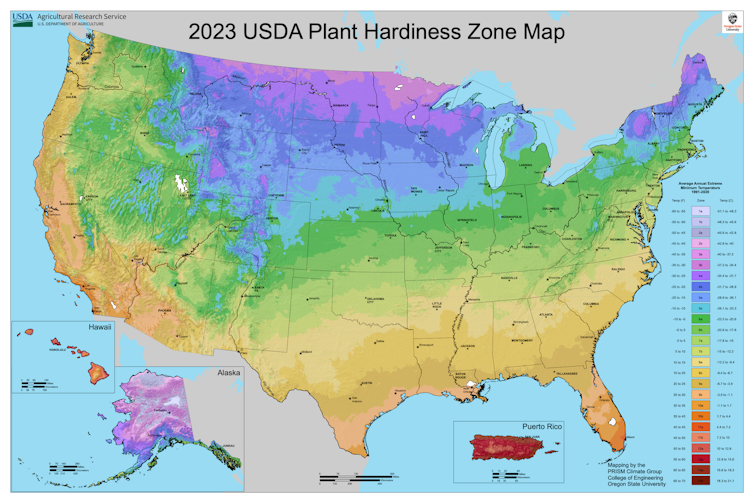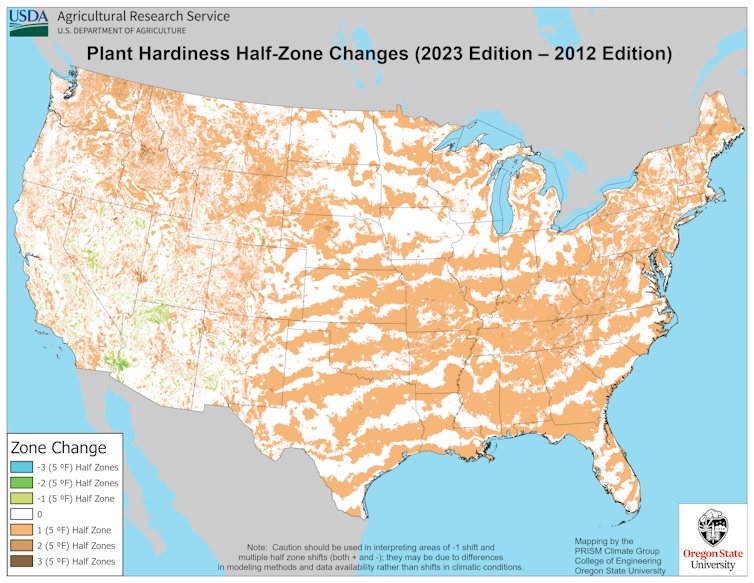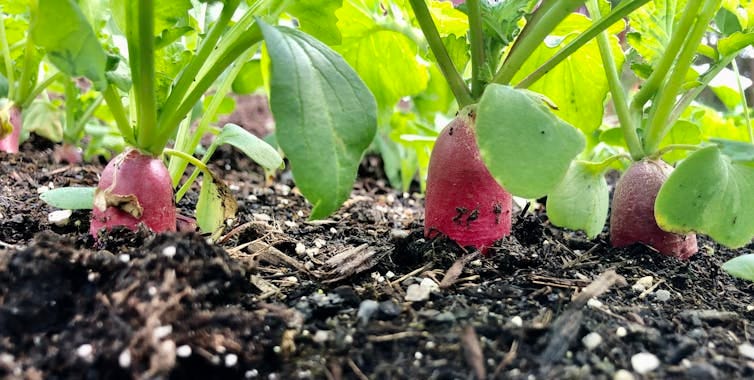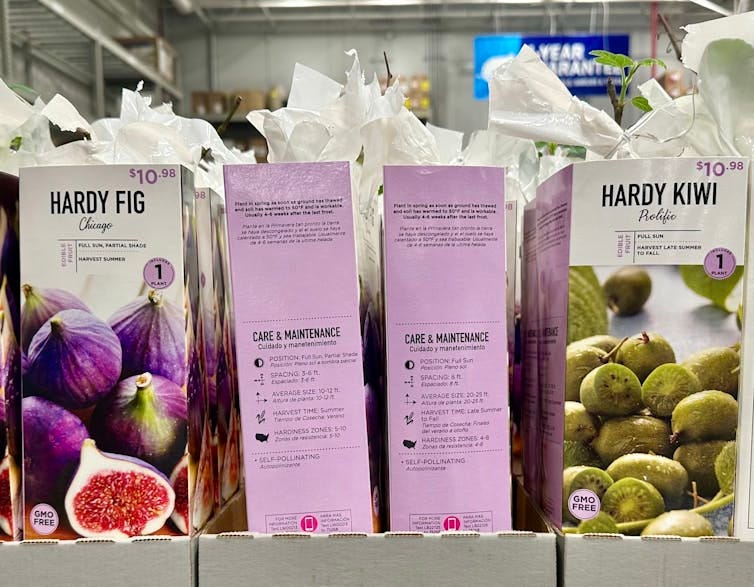# Climate Change and Gardening: Adaptation Strategies for Gardeners
Written on
Climate Change and Plant Hardiness Zones
As spring arrives in North America, many individuals flock to gardening sections of home improvement stores, drawn by vibrant seed packets and a variety of potted plants. However, it's crucial to recognize that some species that once flourished in your yard may no longer thrive due to changing environmental conditions.
This change is largely attributed to the recent update of the U.S. Department of Agriculture’s plant hardiness zone map, a tool that has long assisted gardeners in identifying suitable plants for their areas.

The revised 2023 USDA plant hardiness zone map illustrates regions where various plants can be expected to grow, based on their ability to withstand extreme winter temperatures. The darker shades, ranging from purple to blue, signify colder zones, transitioning to temperate (green) and warmer zones (yellow and orange).
As we compare the 2023 map to its 2012 predecessor, it becomes evident that climate change is pushing plant hardiness zones northward. On average, the coldest winter temperatures recorded between 1991 and 2020 are approximately 5 degrees Fahrenheit (2.8 degrees Celsius) warmer than those documented from 1976 to 2005.
In certain regions, such as parts of central Appalachia, northern New England, and north central Idaho, winter temperatures have increased by 1.5 hardiness zones (15 degrees F or 8.3 C) over the past three decades. This shift significantly affects the types of plants—both annuals and perennials—that can thrive in these evolving climates.

The updated map reflects how plant hardiness zones have migrated north from 2012 to 2023. A half-zone change is represented by tan areas, while white zones indicate minimal change.
Understanding Climate Impact on Gardening
As a plant pathologist, I have dedicated my career to investigating plant health challenges. Many environmental stresses not only reduce plant lifespans but also hinder their growth and productivity.
Experiencing these challenges firsthand in my own garden, I have observed how rising temperatures, pests, and diseases can impact yields. Gaining insight into how climate change affects plant communities can empower gardeners to optimize their gardens in a warming world.
Video: Updated Plant Hardiness Zones: What It Means For Your Garden This video explains how the updated plant hardiness zones impact gardening practices and plant selection.
Rising Temperatures and Their Effects
The upward trend in global temperatures is undeniable. From 2014 to 2023, the world witnessed the hottest summers recorded over 174 years of climate observation. Even a few months of extreme heat can dramatically influence plant health, particularly for cool-season crops like broccoli, carrots, radishes, and kale.

Warmer winters are also a significant factor for plants. The USDA categorizes plant hardiness zones based on the coldest average winter temperatures for specific regions. Each zone encompasses a 10-degree Fahrenheit range, numbered from 1 (coldest) to 13 (warmest), and further divided into 5-degree Fahrenheit half-zones.
For instance, the coldest hardiness zone, 3a, exists in the northernmost parts of Minnesota, with extreme winter temperatures ranging from -40 F to -35 F. Conversely, the warmest zone, 11b, is located in Key West, Florida, where the lowest temperatures range from 45 F to 50 F.
The 2012 map indicated a broader expanse of zone 3a in northern Minnesota, while North Dakota's designated areas have now shifted entirely into Canada. Similarly, zone 10b previously included the southern tip of mainland Florida but has moved northward as zone 11a encroaches.
Many gardeners purchase seeds or seedlings without considering hardiness zones, planting schedules, or disease risks. However, with plants facing temperature fluctuations, heat stress, and diseases, their survival in previously suitable areas may be jeopardized.
Successful Gardening Strategies
Despite these challenges, successful gardening is still achievable. Here are some essential considerations before planting:
Annuals vs. Perennials
Hardiness zones hold less significance for annual plants, which complete their life cycle within a single growing season, compared to perennials, which live for multiple years. Annuals typically avoid the lethal winter temperatures that define hardiness zones.
Most annual seed packets do not indicate hardiness zones but offer sowing date guidelines based on geographic areas. Adhering to these dates is vital to prevent frost-sensitive crops from being planted prematurely or cool-season crops from being harvested too late.
User-Friendly Perennials
Many perennial plants can thrive across a wide range of temperatures. For example, hardy fig and kiwifruit flourish in zones 4–8, encompassing much of the Northeast, Midwest, and Plains states. Raspberries are adaptable in zones 3–9, while blackberries thrive in zones 5–9.
This adaptability simplifies choices for most gardeners, as the majority of U.S. states fall within two or more of these zones. Nevertheless, it's crucial to check plant tags to avoid selecting varieties with restricted hardiness zones over those with greater adaptability.
Sensitivity of Fruit Trees
Fruit trees consist of two main components: the rootstock and the scion wood, which are grafted together. The rootstock determines the tree's size, flowering timing, and resilience against soil pests and diseases, while the scion wood influences the fruit type.
Most commercially available fruit trees can endure various hardiness zones. However, stone fruits like peaches, plums, and cherries are particularly sensitive to temperature variations, especially sudden winter temperature shifts that lead to unpredictable freeze-thaw cycles.

Adhering to planting guidelines is essential for maximizing the chances of success for fruit trees.
Pest Movements and Adaptations
Plants are not the only organisms affected by changing temperatures. Milder winters enable southern insect pests and plant pathogens to extend their ranges northward.
For instance, Southern blight—a stem and root rot disease affecting 500 plant species—was once confined to warmer southern gardens, but it has increasingly spread to the Northeast U.S., impacting crops like tomatoes, pumpkins, and apples.
The rise in plant pathogens may also exploit warmer winter conditions, resulting in prolonged soil saturation instead of freezing. In such conditions, microbes can invade dormant perennial plant roots, increasing the likelihood of disease.
Accepting the impact of climate change on your garden favorites can be challenging. However, numerous plant varieties are available to suit your preferences and hardiness zones. Gardening presents an opportunity to appreciate the resilience of plants and their ability to thrive in a changing world.
Video: Did Your Growing Zone Change? | New USDA Plant Hardiness Map Explained This video delves into the recent changes in the USDA plant hardiness map and what it means for gardeners.
This article is produced by The Conversation, an independent nonprofit news organization committed to providing context for understanding global events. To learn more or subscribe to their weekly newsletter, visit their website.
Matt Kasson is funded by the U.S. Department of Agriculture.